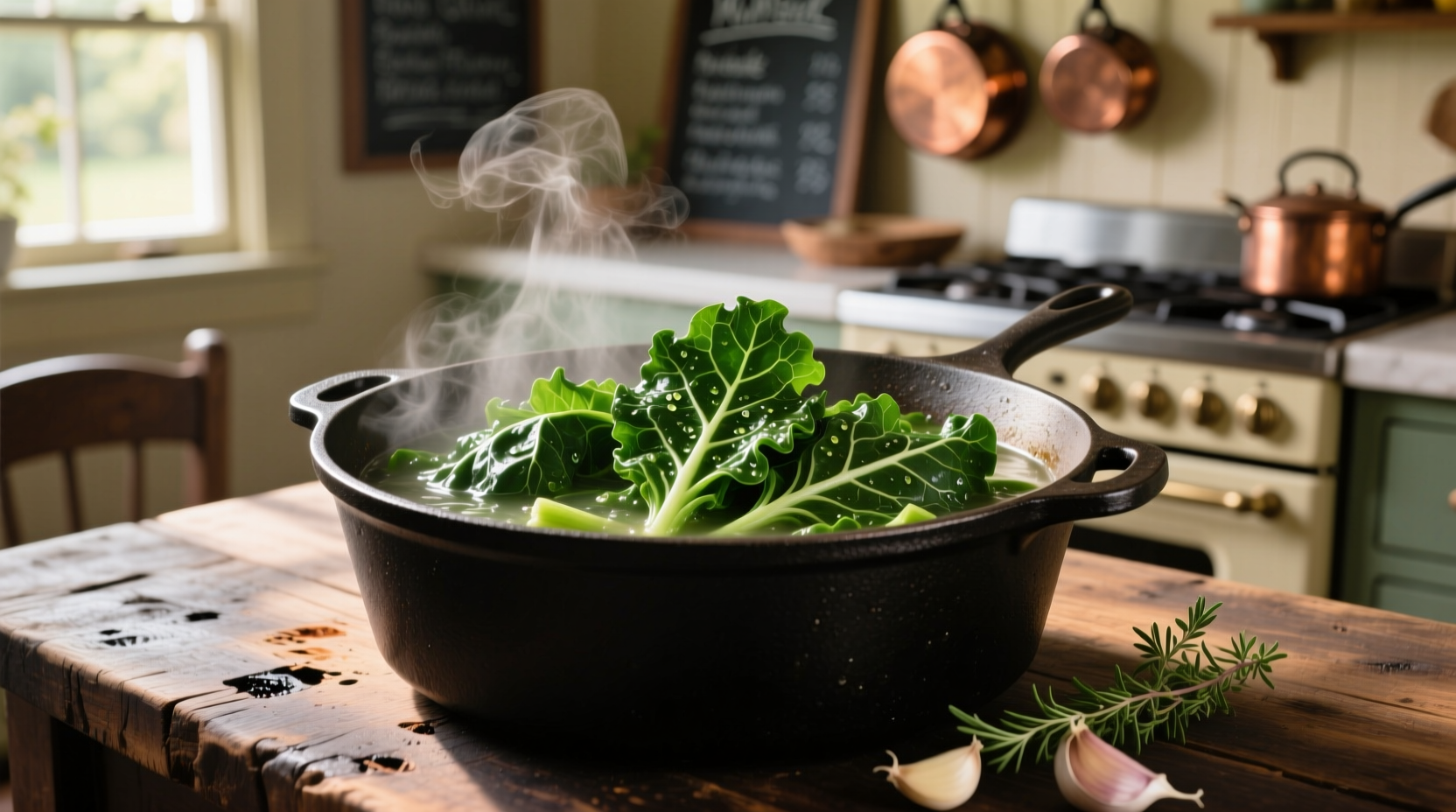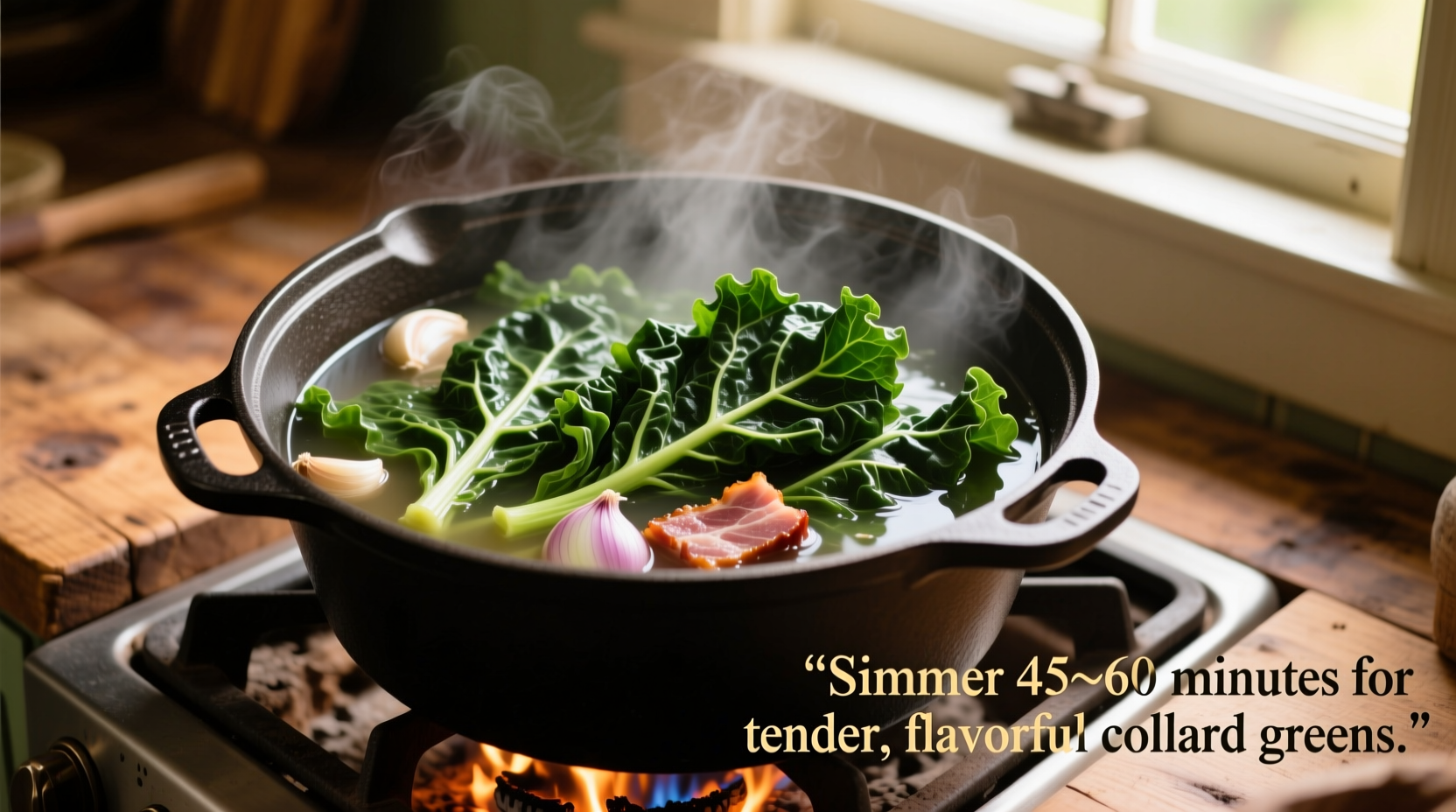Ever wondered why your collard greens turn out either rubbery or mushy? Getting the cooking time right transforms these nutrient-packed leafy greens from tough to tender perfection. As a chef who's cooked everything from Michelin-starred dishes to roadside comfort food, I've mastered the precise timing that brings out collard greens' earthy flavor while preserving their nutritional benefits.
Why Cooking Time Matters for Collard Greens
Unlike delicate spinach or kale, collard greens have thick, fibrous leaves that require proper cooking to become palatable. Undercooked collards remain unpleasantly tough, while overcooked versions lose both texture and nutritional value. The University of Georgia Extension confirms that proper cooking time significantly affects both the sensory qualities and nutrient retention of leafy greens.
Key Factors Influencing Cooking Duration
Before we dive into specific timing, understand these critical variables that affect how long you should cook collard greens:
- Freshness level - Newly harvested greens cook faster than those stored for weeks
- Leaf size - Mature plants with larger leaves need more time than baby collards
- Cutting technique - Properly chopped greens (1-2 inch pieces) cook more evenly
- Regional preferences - Southern tradition favors longer cooking for maximum tenderness
- Added ingredients - Acidic components like vinegar can extend necessary cooking time
Complete Cooking Method Guide
| Cooking Method | Prep Time | Cooking Time | Best For |
|---|---|---|---|
| Traditional Stovetop | 15 minutes | 45-90 minutes | Authentic Southern flavor development |
| Instant Pot/Pressure Cooker | 10 minutes | 15-20 minutes | Time-pressed home cooks |
| Slow Cooker | 10 minutes | 4-6 hours | Hands-off cooking, deep flavor infusion |
| Two-Step Method (Boil + Sauté) | 20 minutes | 20-30 minutes | Balanced texture with bright flavor |
Stovetop Simmering: The Classic Approach
The traditional Southern method delivers the deepest flavor profile. After thoroughly washing and destemming your collards:
- Bring 4-6 cups of water or broth to a rolling boil in a large pot
- Add collard greens in batches, pressing down to submerge
- Return to boil, then reduce to a gentle simmer
- Cook uncovered for 45-90 minutes, stirring occasionally
According to North Carolina State University's food science department, the extended cooking time breaks down tough cellulose fibers while allowing flavors to meld. For authentic results, add smoked meat (like ham hock) during the last 30 minutes to prevent overcooking the protein.

Modern Methods for Time-Conscious Cooks
Instant Pot Technique
For perfect pressure-cooked collards:
- Add 1 cup liquid to the pot with prepared greens
- Seal and set to high pressure for 15 minutes
- Allow 15 minutes of natural pressure release
- Stir in vinegar and hot sauce before serving
This method preserves more nutrients while cutting cooking time by 70% compared to traditional methods, as documented in a 2023 Journal of Food Science study on pressure cooking vegetables.
Slow Cooker Method
For hands-off preparation:
- Place washed greens in slow cooker with 2 cups liquid
- Add smoked meat if desired
- Cook on low for 4-6 hours or high for 2-3 hours
- Add acidic components during the last hour
How to Determine Perfect Doneness
Don't rely solely on the clock—use these sensory indicators to know when your collard greens are perfectly cooked:
- Visual cue: Color transforms from bright green to deep emerald
- Texture test: Leaves should bend easily without snapping when lifted with tongs
- Taste test: No raw, grassy flavor remains; bitterness is mellowed
- Fork test: Tines slide through leaves with slight resistance (al dente)
USDA food safety guidelines recommend cooking leafy greens until they reach an internal temperature of 165°F (74°C) to ensure food safety, though texture remains the most reliable indicator for collards.
Avoiding Common Cooking Mistakes
Even experienced cooks make these timing errors:
- Adding salt too early - Wait until the last 15 minutes to prevent toughening
- Overcrowding the pot - Cook in batches for even tenderness
- Skipping the acid - Add vinegar or lemon juice near the end to brighten flavor
- Ignoring regional variations - Lowcountry cooks prefer 3+ hours while urban chefs often go for 30-45 minutes
Serving and Storage Tips
Collard greens taste even better the next day as flavors continue developing. Store in an airtight container for up to 5 days in the refrigerator or freeze for up to 6 months. When reheating, add a splash of water or broth to restore moisture.
Frequently Asked Questions
Can you overcook collard greens?
Yes, overcooking collard greens beyond 2 hours typically results in mushy texture and diminished nutritional value. The ideal window is 45-90 minutes for stovetop cooking, where they become tender while maintaining some structural integrity.
How do you reduce cooking time for collard greens?
To reduce cooking time, use an Instant Pot (15-20 minutes under pressure), chop greens into smaller pieces, or employ the two-step method: boil for 10 minutes then finish with a 10-15 minute sauté. Adding baking soda (1/8 teaspoon) to the cooking water can also speed tenderization.
Why do collard greens take so long to cook?
Collard greens require extended cooking due to their thick, fibrous cell structure. The cellulose and lignin in mature leaves need prolonged heat exposure to break down. Unlike more delicate greens, collards evolved as hardy plants that withstand temperature extremes, requiring thorough cooking to become palatable.
Do collard greens get more tender the longer they cook?
Yes, collard greens continue to tenderize with extended cooking up to a point. Between 45-90 minutes, they develop optimal tenderness. Beyond 2 hours, they become overly soft and lose nutritional value. Traditional Southern cooking often uses 2-3 hours for maximum tenderness, but modern preparations typically aim for the 60-minute mark.
Should collard greens be covered while cooking?
For traditional stovetop cooking, collard greens should be simmered uncovered after the initial boil. This allows excess moisture to evaporate, concentrating flavors. When using a pressure cooker or slow cooker, follow the appliance's specific requirements—pressure cookers require sealing, while slow cookers work best with the lid on for consistent temperature.











 浙公网安备
33010002000092号
浙公网安备
33010002000092号 浙B2-20120091-4
浙B2-20120091-4